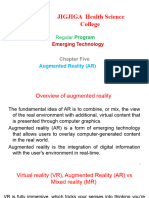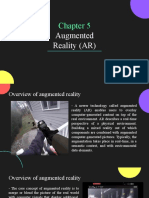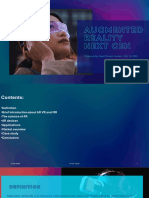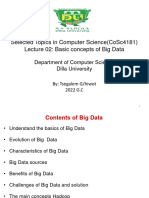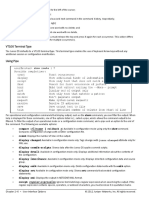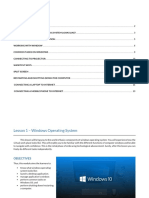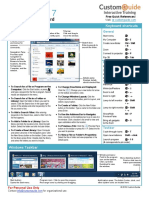0% found this document useful (0 votes)
17 views29 pagesLecture 04
Augmented reality (AR) combines virtual elements with the real world in real time. This document outlines AR and its applications. It explains that AR enhances the real world by overlaying virtual information, while virtual reality immerses users in a simulated world. Mixed reality merges real and virtual worlds. The document describes common AR applications in education, medicine, and entertainment, such as using AR to enhance learning, assist with medical procedures and diagnoses, and enhance live performances.
Uploaded by
natnaelCopyright
© © All Rights Reserved
We take content rights seriously. If you suspect this is your content, claim it here.
Available Formats
Download as PDF, TXT or read online on Scribd
0% found this document useful (0 votes)
17 views29 pagesLecture 04
Augmented reality (AR) combines virtual elements with the real world in real time. This document outlines AR and its applications. It explains that AR enhances the real world by overlaying virtual information, while virtual reality immerses users in a simulated world. Mixed reality merges real and virtual worlds. The document describes common AR applications in education, medicine, and entertainment, such as using AR to enhance learning, assist with medical procedures and diagnoses, and enhance live performances.
Uploaded by
natnaelCopyright
© © All Rights Reserved
We take content rights seriously. If you suspect this is your content, claim it here.
Available Formats
Download as PDF, TXT or read online on Scribd
/ 29





















